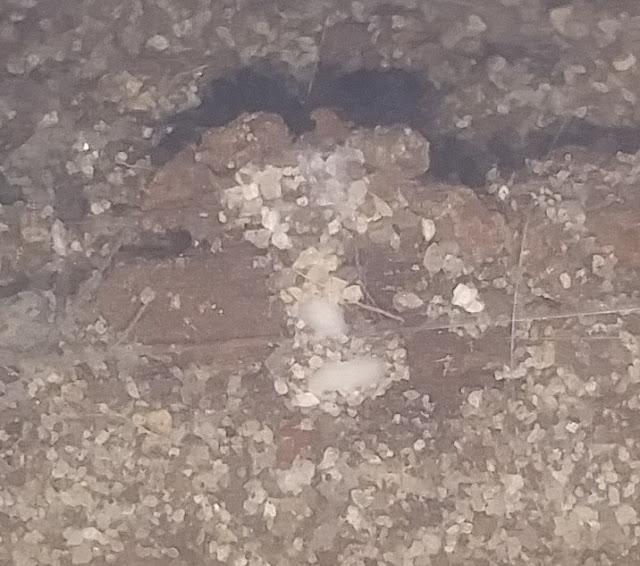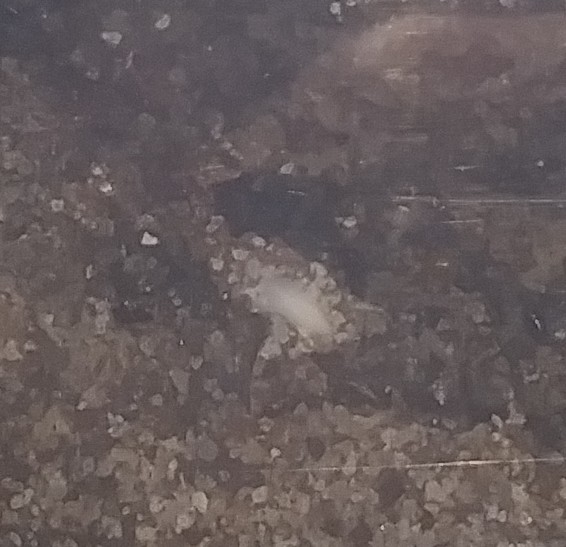Well, unfortunately my single male Eurycotis opaca "Jaruco" died, right after maturing. This was seemingly due to a Serratia bacteria infection, seems this batch of E.opaca came in infected with the stuff, and sadly my male happened to die as a result... 😢
Funnily enough, my sole female E.opaca "Soroa" also died due the same reason. However, there was a stray ooth in their shipping cup I had missed, which hatched about a month ago, so I have a decent amount of nymphs to work with it that strain thankfully.
However, this leaves me with a single adult male "Soroa", and an adult female "Jaruco"... I don't advocate for locality crosses, and their offspring will almost certainly look worse than either pure locality IMO, BUT I've always wondered what an intergrade between the two would look like. So, I guess I'll make that happen. 🤷♂️ I won't sell the offspring obviously, this is just to quell my own curiosity. Both these adults would die unmated anyways if I left them alone, so might as well see what happens when they cross (which could prove useful for identifying potential locality "hybrids" of this species, if those were to ever start flooding the market).
For whatever reason, my Cariblatta lutea seem to be failing. I got a strong and fast initial round of hatches not too long after getting these from Kyle, but the nymph survival rate has been abysmal thus far, and I've no idea why. 🤔 I still have a breedable number of nymphs, but not sure the population will actually grow much this generation, very odd, considering I feel my husbandry is on point for them.
Another Pseudophyllodromid that's taken a big L in my collection, Margattea cf. bisignata "Macao". Unfortunately I underestimated just how well my Perisphaerus punctatus were doing, and they outcompeted the Margattea in their enclosure before I realized what was going on. I have a single adult male, and a subadult female left... Whether this will be enough to save my culture, I'm not sure, but I'm not holding my breath... Though thankfully, at least two of the people I sent this species to here in the US have thriving colonies still, so I'm not too concerned with their state in the hobby. 😊
Now this is quite a bummer for me, but my Tafalisca eleuthera adults all died, one after the other, all prematurely, and seem to have barely reproduced in my care at all. I'm not sure why, because my husbandry parameters are pretty much the same as Kyle's, so they should have been fine, and indeed I raised them from nymphs with no problems.
I have found a total of four hatchlings so far, but I'm pretty sure that's gonna be it... It seems like my females didn't find my enclosure at all suitable for oviposition, depite them having bark, substrate, and cotton balls to potentially oviposit into (all of which are documented egg laying sites for them). Pretty disappointing outcome, considering how enamored with this species I am. 😢
My Ceuthophilus chiricahuae are also doing very poorly, and I'm not entirely sure why. The adults acted extremely territorially towards each other, and the false didn't lay a ton of eggs. A lot of the eggs they did lay simply rotted, and while the half dozen or so offspring that are remain are stable and growing well, I have less than I started with now... 😐 I do still have an adult female, but I've no idea if she's actually gravid, let alone mated.
Anyways, I moved them to an enclosure with better ventilation, in a slightly warmer location, and will probably give them an actual humidity gradient rather than keeping the entire enclosure humid, just to see if that all helps the next generation do better.
So not a total loss for this species mind you, but awfully close.
Well, I found out why the Asbolus verrucosus Joshua sent me weren't doing well well. They didn't have entomophagous fungus, rather they were infected with parasitic wasps. 🙃😂 Four of the six Joshua sent me unfortunately died and had wasp larvae emerge from them, which instantly burrowed into the substrate and formed silky cocoons.
I know I should probably rear some of these wasps up, take pictures, etc. for the sake of documentation... But f**k it, I don't wanna risk some of these SOBs escaping and parasitizing any of my other Cryptoglossini, or god forbid any of my other Tenebs (though parasitic wasps DO tend to be very host specific). These crappy phone pics of their cocoons before I destroyed them is the best I can do:
So yeah, apparently not allowed to keep BDFBs... 🙃😂 Though a friend of mine reached out and offered to send me more, an offer which I'll probably take them up on next month or so.
Well, that about sums up all my failures of 2023 I think. 😅 Not too bad so far I guess. Thanks for reading, see y'all next time!





No comments:
Post a Comment